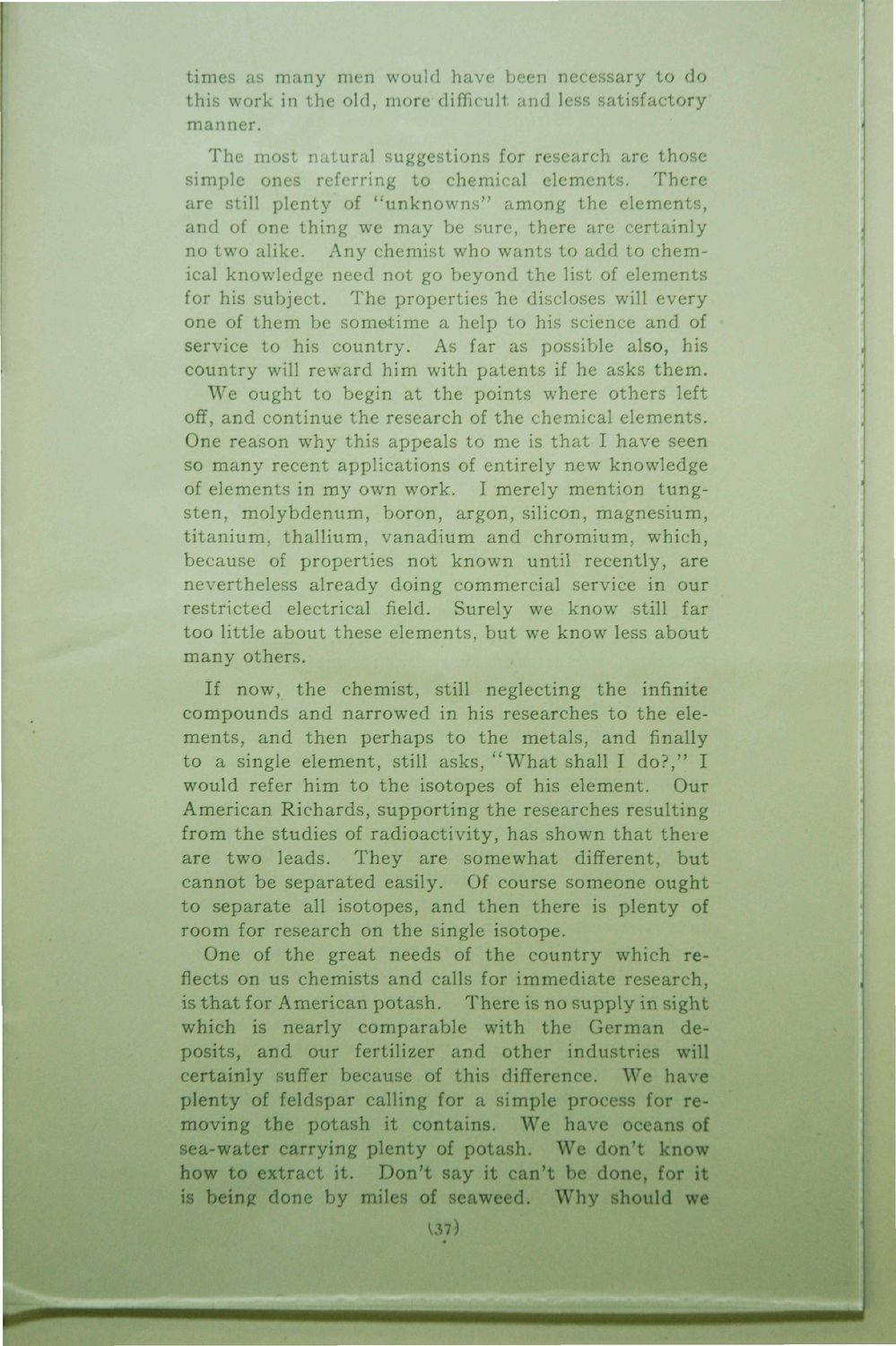| |
| |
Caption: Dedication - New Chemistry Building
This is a reduced-resolution page image for fast online browsing.

EXTRACTED TEXT FROM PAGE:
times as many men would have been necessary to do this work in the old, more difficult and less satisfactory manner. The most natural suggestions for research are those simple ones referring to chemical elements. There are still plenty of "unknowns" among the elements, and of one thing we may be sure, there are certainly no two alike. Any chemist who wants to add to chemical knowledge need not go beyond the list of elements for his subject. The properties "he discloses will every one of them be sometime a help to his science and of service to his country. As far as possible also, his country will reward him with patents if he asks them. We ought to begin at the points where others left off, and continue the research of the chemical elements. One reason why this appeals to me is that I have seen so many recent applications of entirely new knowledge of elements in my own work. I merely mention tungsten, molybdenum, boron, argon, silicon, magnesium, titanium, thallium, vanadium and chromium, which, because of properties not known until recently, are nevertheless already doing commercial service in our restricted electrical field. Surely we know still far too little about these elements, but we know less about many others. If now, the chemist, still neglecting the infinite compounds and narrowed in his researches to the elements, and then perhaps to the metals, and finally to a single element, still asks, "What shall I do?," I would refer him to the isotopes of his element. Our American Richards, supporting the researches resulting from the studies of radioactivity, has shown that there are two leads. They are somewhat different, but cannot be separated easily. Of course someone ought to separate all isotopes, and then there is plenty of room for research on the single isotope. One of the great needs of the country which reflects on us chemists and calls for immediate research, is that for American potash. There is no supply in sight which is nearly comparable with the German deposits, and our fertilizer and other industries will certainly suffer because of this difference. We have plenty of feldspar calling for a simple process for removing the potash it contains. We have oceans of sea-water carrying plenty of potash. We don't know how to extract it. Don't say it can't be done, for it is being done by miles of seaweed. Why should we V37-)
| |